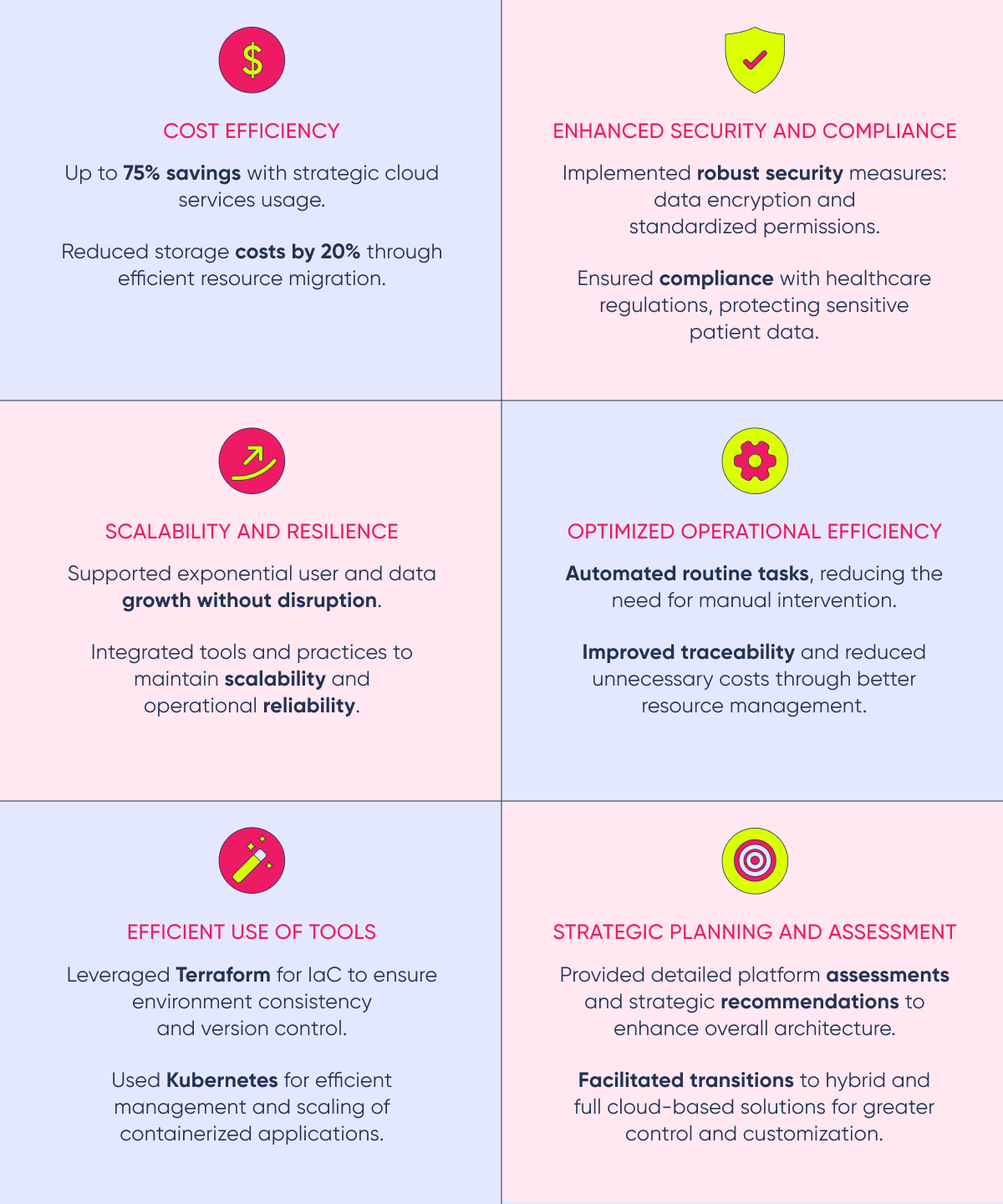
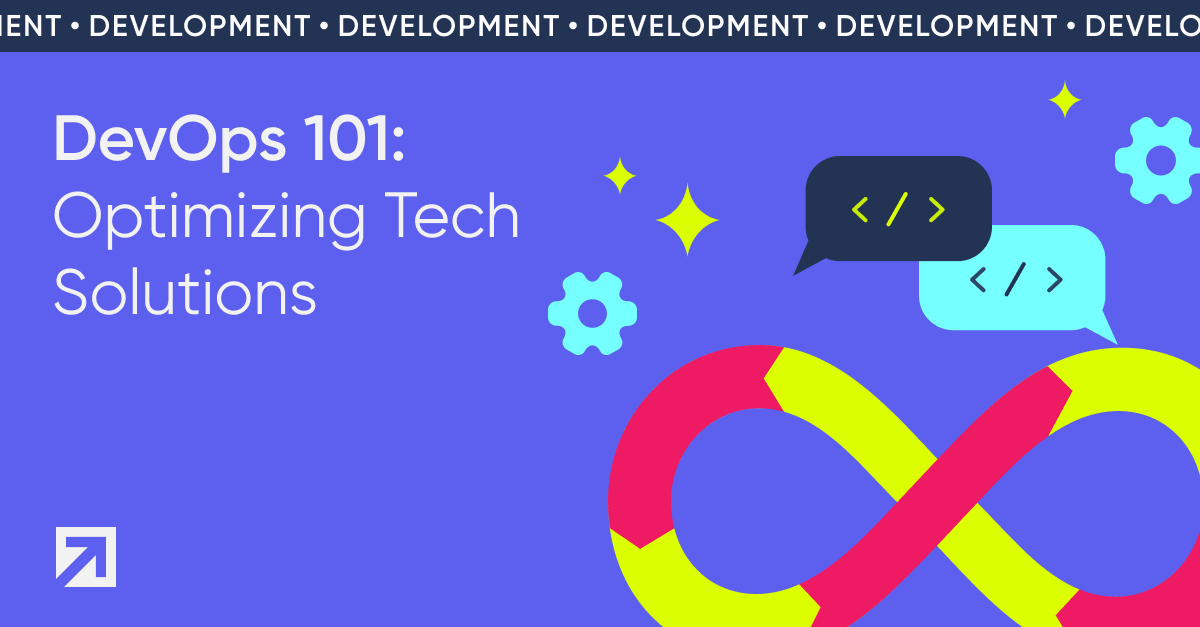
Imagine a way to save digital projects thousands of dollars by reducing developers' time and optimizing resources. What if you could keep different teams in sync and organized, all working towards the same goal? This would reduce rework, increase efficiency, and result in faster time to market with quicker iterations based on real user feedback. Wouldn't you want that?
Luckily, you don't need to dream about it—all of this is possible through DevOps. You've likely heard of it and seen the famous "infinite symbol" image representing its stages. In this blog, we're diving deeper into what DevOps is, what drives it, how we implement it here at Xmartlabs, and the significant impact it has had on our clients (ie. how we've reduced their storage costs by 20% and saved up to 75% of resources dedicated to cloud usage).
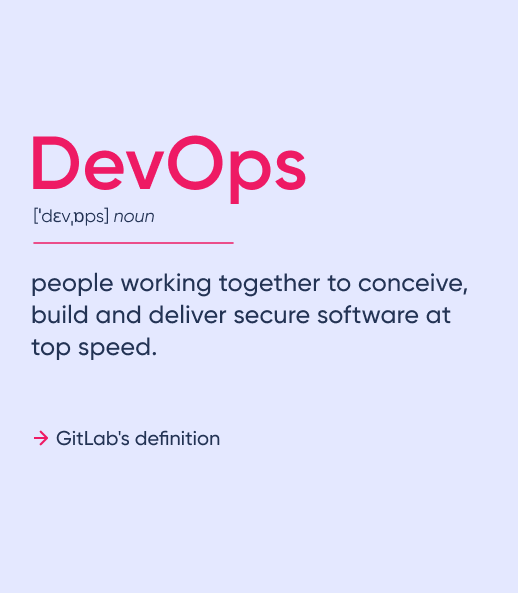
What exactly is DevOps
Before DevOps was conceived (2007 approx.), the software lifecycle process looked very different from current extended practices. The developers writing the code worked separately from the operations team that deployed and supported that same code.
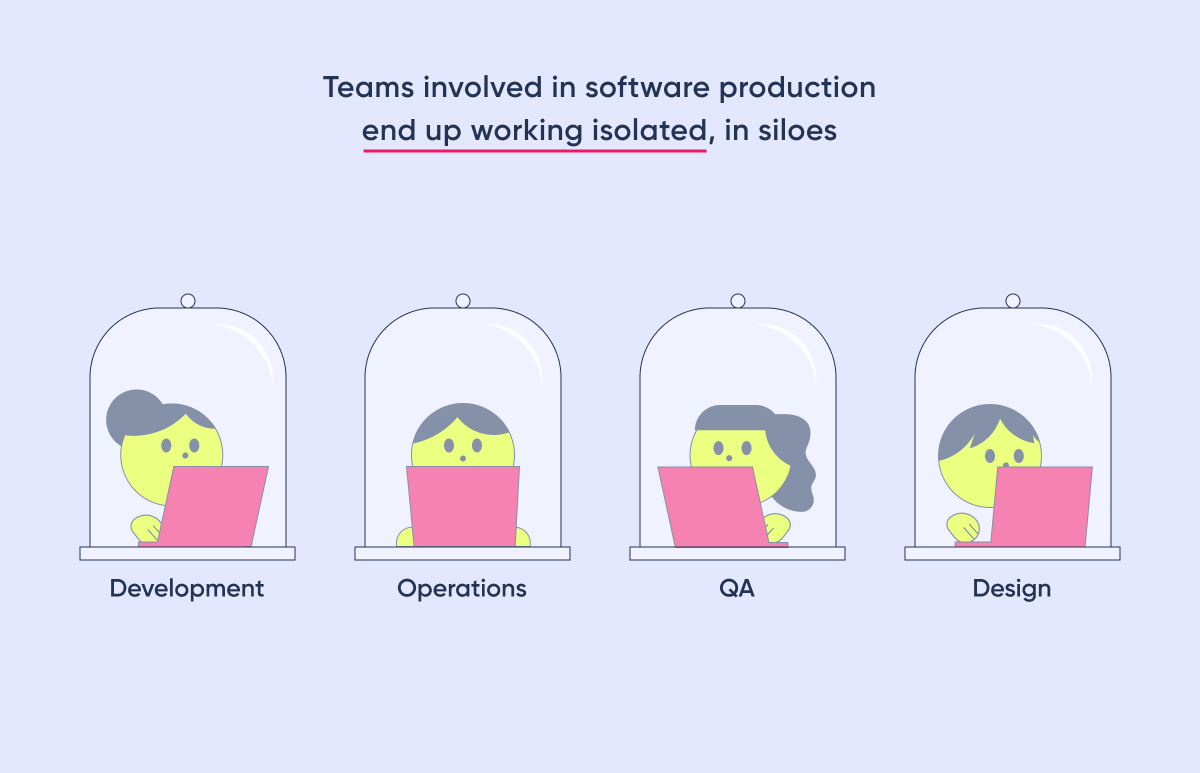
Enter: DevOps. Based on Agile methodologies, this new way of working integrates people, processes, and technology through a mindset that enables team integration.
The foundations of DevOps
Key principles that drive DevOps practices and methodologies:
- Collaboration and Communication: Open, ongoing communication between development, operations, business, and other stakeholders to enhance teamwork and minimize silos.
- Automation: Automating routine tasks—such as integration, testing, deployment, and provisioning—boosts efficiency and speeds up delivery by reducing manual effort.
- Continuous Integration and Continuous Deployment (CI/CD): Frequent code updates are automatically tested and deployed, ensuring a steady flow of improvements to production.
- Feedback and Iteration: Using feedback from various stages of the DevOps pipeline to continuously improve processes, tools, and outcomes.
- Monitoring and Logging: Continuously monitoring system performance and health, coupled with robust logging practices, allow to quickly identify and address issues.
DevOps phases
🧭 Plan: It consists of defining and documenting the software's features and functionalities and ensuring all team members share a common understanding of the project's goals.
🔨 Build: Here, coding is accompanied by automated tools that streamline testing and integration, creating an efficient and adaptive code development.
✅ Deliver: This phase focuses on deploying the product into production with rigorous checks, blending manual oversight and automated processes to ensure flawless releases.
👌 Operate: This phase prioritizes maintenance, monitoring, and proactive troubleshooting in production to maintain high availability, enhance security, and ensure excelent user experiences.
🧪 Test: Running alongside development, this phase employs automated testing on all new code to maintain high quality and ensure that only the best code progresses.
🚀 Deploy: Continuous deployment practices enable quick and automatic updates, keeping the software responsive to user needs and market demands.
👀 Observe: This phase involves real-time monitoring to identify and address performance issues, maintaining optimal functionality swiftly.
💬 Continuous Feedback: The cycle concludes with a thorough review of each release, providing insights that drive continuous improvement for future cycles.
How we have incorporated DevOps
Our team has established three steps to implement DevOps on existing digital products and that constitute our approach to the service.
-
Infrastructure Assessment: Through an in-depth and comprehensive analysis process, our DevOps team assesses the following aspects of current infrastructures:
- dimension
- resources
- scalability
- networking
- resource usage
- cost optimation
- security compliance
- best-practices implementation
-
Strategic Suggestions: Once there's an “official” diagnosis, they make actionable recommendations to improve infrastructure and processes. Such suggestions might include:
- Creating pipelines: help automate all the workflow devs do manually, improve what they already had in place
- Introduce certain industry-level best-practices
- Ensure traceability, standardization, and regulation of everything running in the cloud
- Enhance existing infrastructure
-
Implementation and Ongoing Support: Once suggestions are made, the team is in charge of implementing and maintaining them. They work in three tracks: automation, infrastructure and observability.
→ Automation: They aims to make the dev's life easier by automating processes to make the development flow as automatic as possible and make deploying code a smooth task.
→ Infrastructure (daily mantainance + support): They design and implement the server side in the cloud. They provide the automated tool to the developer and the server.
→ Observability: Once the code is running they provide visibility of what goes on in said code. Knowledge on what is happening with the application, what each user is doing, etc.
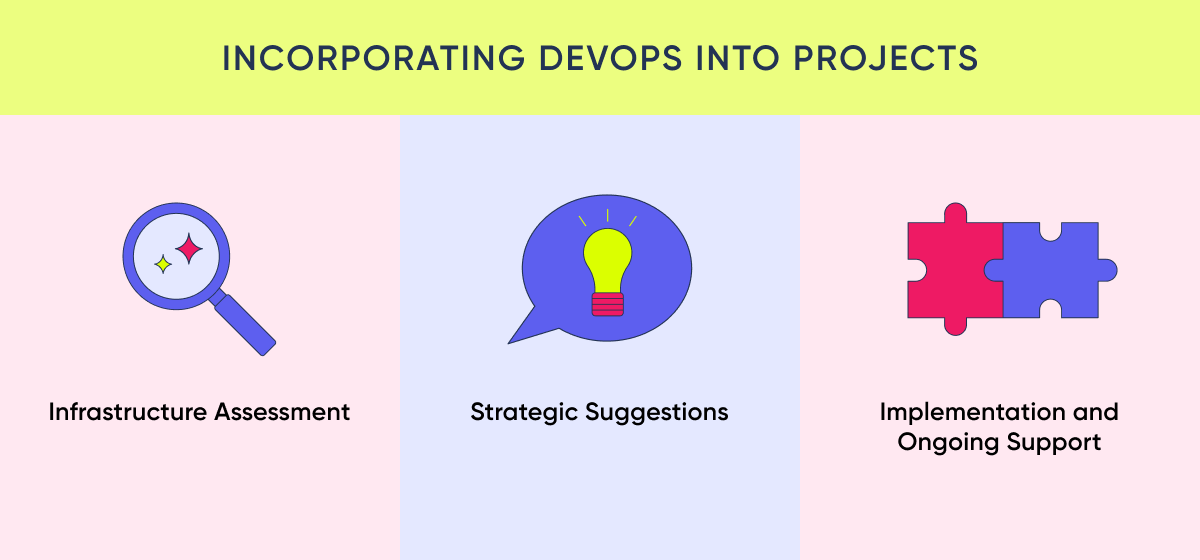
Use Case #1: Large healthtech corporation with sensitive patient data
Our collaboration with a multi-billion dollar company specializing in precision oncology was designed to boost their technological frameworks and optimize cost management through strategic innovation.
Resource Optimization
Our goal was clear from the outset: streamline costs without compromising functionality. By integrating AWS Reserved Instances, we enabled the health-tech firm to significantly reduce their cloud infrastructure expenses—up to 75% savings compared to on-demand pricing. This proactive approach slashed costs and strengthened budget predictability and operational efficacy. Plus, by transitioning their storage solutions from GP2 to GP3, we reduced their expenditure by 20%.
Enhancing Operational Practices
Challenges within their AWS configurations included unchecked resource consumption and redundant processes, which escalated costs and complicated management. Our strategy focused on refining these aspects through meticulous resource labeling, ensuring every asset was tracked and accountable. We standardized cloud operations to enforce consistency and control, greatly simplifying the execution of PoCs. Further upgrades were implemented in the infrastructure, such as enhancing Kubernetes clusters and microservices for their application portals, which led to smoother and more reliable operations.
Robust Data Security
Amid the technical enhancements, safeguarding critical data was key. We undertook rigorous cloud security assessments, resulting in the implementation of encryption for data in transit and the standardization of permissions. This protected sensitive information and regulated access across the company’s cloud platforms, ensuring that data integrity and security were maintained at all levels.
Tool Integration
Using cutting-edge tools was essential for this project. Terraform allowed us to employ an infrastructure-as-code (IaC) approach, providing a robust framework for deploying consistent environments and maintaining version control. Kubernetes enabled container orchestration, managing the scaling and deployment of containerized applications. Additionally, we bridged the gap between old and new by integrating the client’s legacy data center, which included critical systems like the Laboratory Information Management System (LIMS), with modern cloud architectures. This preserved valuable legacy systems and enhanced them, ensuring they worked harmoniously with newer technologies.
Use Case #2: Healthtech platform with exponential user growth
We partnered with a health-tech company working to help stroke survivors recover through a mobile user application platform and a Content Management System (CMS) dashboard for managers. They faced challenges in scaling due to its rapid growth and the extensive amount of sensitive healthcare data they processed.
Challenge and Opportunity
The primary challenge was managing their exponential growth without compromising the seamless functionality and security that users—patients and managers—rely on. The infrastructure had to support increasing users and ensure robust security and compliance with healthcare regulations. This was critical to maintaining uninterrupted service and safeguarding patient data across all interactions within the platform.
Strategic DevOps Intervention
Our DevOps team assessed the platform's architecture to understand its scalability potential and current security. This included analyzing service counts, resource allocation, and the integration of various components, such as mobile apps and the navigator dashboard.
Key DevOps Contributions
Platform Assessment: Our initial evaluations benchmarked the platform against industry best practices for scalability and compliance. This highlighted the critical areas where enhancements were necessary to support the platform’s growth while ensuring data security.
Scalability and Security Enhancements: To manage the growing data volume and complex platform requirements, we integrated BQuery for logging mobile app events, which provided insights into user interactions and supported data-driven decisions for feature development using Firebase analytics.si
We also fortified the platform’s security framework and compliance with healthcare regulations by leveraging AWS and Aptible’s HIPAA-aligned infrastructure. These measures enhanced the platform's resilience against potential disruptions and unauthorized data access.
Strategic Recommendations: Our advice was key for enhancing platform scalability and security. We enabled a hybrid approach that combined the strengths of AWS with Aptible, setting the stage for a full migration to Amazon’s services. This transition was designed to offer greater control over the infrastructure and customization to meet specific operational needs.
Outcome
Through these targeted DevOps interventions, the client not only scaled its operations effectively but also reinforced its commitment to maintaining the highest data security and regulatory compliance standards. Our efforts ensured that the platform could continue to grow and adapt in an ever-changing digital health landscape, enhancing patient care and admin efficiency.
Why incorporating DevOps
Words like speed, improved collaboration, rapid deployment, quality, reliability, and security are often used to describe the advantages or benefits of implementing DevOps. And even though those remain true, here are some benefits that stemmed from incorporating DevOps into the protections we mentioned.
- Integrated Automation: We eliminate as many manual tasks as possible, reducing error margins and freeing developers to focus on innovating.
- Resource Optimization: In Gurdant, we achieved a 20% reduction in storage costs by migrating to more efficient solutions and leveraged AWS savings plans to maximize budget efficiency.
- Security and Compliance: We assess and enhance cloud security, ensuring that applications and data are protected and compliant with regulations. We did this for Kandu to ensure privacy and data integrity in the healthcare sector.
- Scalability and Resiliency: We ensure solutions can grow sustainably. For example, when evaluating the Kandu platform, we ensured the platform could scale to handle exponential user growth while maintaining business continuity.
Commercially, these translated into a reduced time to market and a stronger ability to adapt to market needs. It also meant having a more stable and reliable product for its users, and if any failings should arise, they are compensated by a smaller time to recovery.
If you have a scalling product or complex infrastructure you want our team to assess, don't hesitate to contact our team to schedule a quick exploratory meeting!
